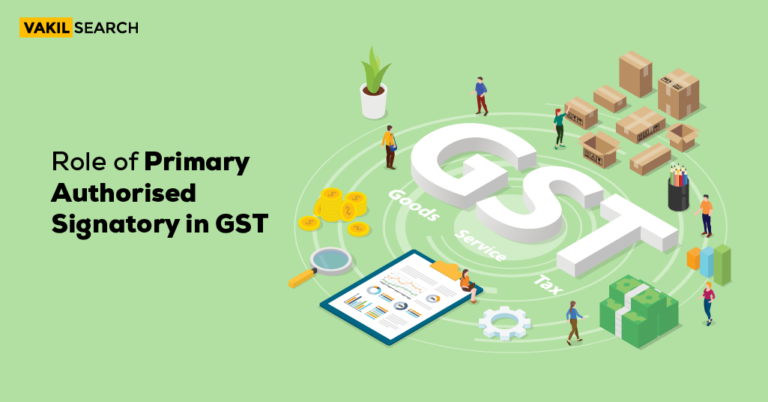The Central Board of Indirect Taxes and Customs has imposed a standard goods and services tax rate, the rate of 12% GST (Goods and Service Tax) on textiles, apparel, and footwear to rectify the inverted duty structure. Reach out to Vakil Search to get professional legal assistance for GST on Apparel, Clothing, and Textile Products.
In terms of overall GST on Clothing Textile, GDP, economic opportunities, and trade facilitation, India’s garment industry ranks among the oldest and most vital drivers of the country’s economic growth. The textile industry is the second-largest manufacturing sector in the country, which engages both skilled and unskilled workers. Therefore, companies need to be aware of GST on Clothing Textile.
After the introduction of the GST in 2017, the GST Council adjusted the GST on textiles, textile materials, apparel, and clothing. The GST charges on Apparel, Clothing and Textile in India were set by the Council as 0%, 5%, 12%, 18%, and 28% for both services and goods. The GST rate for textiles, such as apparel, garments, cotton items, and other textiles was declared at the Meeting Of the Council on June 3, 2017. In this blog, we look in greater detail at the GST rate for textile, apparel, and related accessories, or in simpler terms, you will learn about fabric GST on Clothing Textile in this article.
What Is GST or Goods and Services Tax?
The Goods and Services Tax (or GST), a simpler method of paying taxes, went into effect on July 1, 2017. Everyone who is a part of the nation’s supply chain for products and services must adhere to it. Service taxes, income taxes, and other taxes that were in existence before the implementation of the Goods and Services Tax have been replaced in order to create uniformity in the indirect tax system.
GST is an indirect tax that firms must collect when supplying products or services. Every business receives a distinct GSTIN after applying for GST Registration by their eligibility and criteria.
What Is the GST Rate for GST on Clothing Textile, and Other Items?
GST on Clothing Textile and knitwear are covered by chapter 61 of the HSN code. Apparel and garments that are not knitted come under Chapter 62 of the HSN code. Any article of clothing or jewelry that falls under either category will be subject to a 5% GST tax as long as the taxable value of the items does not surpass ₹ 1,000 per unit.
According to Schedule II of Chapter 62, 12% GST would be applied to all kinds of clothes and apparel with a retail value greater than ₹ 1,000.
What Is the GST Rate for Footwear?
Footwear with a retail sale price of no more than ₹500 per set is subject to a 5% GST tax if the retail sale price is permanently stamped or imprinted on the shoes themselves.
The footwear categories that are subject to an 18% GST rate are as follows:
- Footwear with textile uppers and outside soles made of rubber, plastic, leather, or composite leather.
- A different type of footwear featuring a rubber or plastic top and an outer sole.
- Gaiters, leggings, and similar items, as well as their component pieces, along with pieces of footwear (with uppers whether or not connected to soles); insoles that can be removed; and similar items like heel cushions.
- Waterproof shoes have exterior bottoms and uppers made of rubber or plastic, each of which is not stitched, riveted, nailed, screwed, plugged, or otherwise similarly attached to the sole.
- Footwear containing leather uppers and outer soles made of rubber, plastic, leather, or composite leather.
What Is the GST Rate on Textiles and Textile Products?
Chapter 63 of the HSN code lists a variety of textile products under the headings “other made-up textile articles, sets, worn apparel and worn textile articles; rags,” including curtains, bedsheets, second-hand garments, and other textiles.
- The sale price of the goods will determine the rate of tax for this part.
- A GST rate of 5% is imposed if the sale price of the textile product is below ₹ 1000.
- A GST rate of 12% is imposed if the sale price exceeds ₹ 1000.
Use our GST Calculator to Calculate GST amount to be paid before registering for GST.
The textile items and products that are included in the HSN code’s chapter 63 list are as follows
- Interior blinds and curtains (including drapes) and bed valances.
- Kitchen and bathroom towels, as well as knitted or crocheted bed sheets, are typically made of terry toweling or other related terry textiles.
- Additional furnishings or decorative items include tablecloths, table covers, napkins, pillowcases, counterpanes, bed sheets, and more. Apart from terry towels, mosquito nets, and cushion covers
- Travel carpets and blankets.
- The same kind of bags and sacks are used for product packaging.
What are the documents required for fabric GST registration?
Documents required for GST registration are listed as follows
- A passport-sized photograph of the applicant
- Information about the application
- Information about the authorized signers
- The PAN card of the corporation
- The primary location of a business is attested to by
- title documents,
- electricity bills, photocopies of municipal khatas,
- Rental Agreements, and
- property tax receipts
(any one of the above)
- Any person may provide evidence of their bank account details, such as:
A bank statement, the first page of their passbook, or a cancelled cheque. (anyone)
- Documents, such as partnership agreements, memorandums of understanding, and articles of incorporation.
What Is the Process You Need to Follow for Online GST Registration?
Following are six simple steps for the process of GST registration online
- Step 1: To register for GST, go to the GST Portal login.
- Step 2: Make a Temporary Reference number by completing OTP Verification.
- Step 3: Consequently, the GST registration application: https://reg.gst.gov.in/registration/ must be submitted using TRN.
- Step 4: Fill out the application form with all the necessary required information and attach the required documents.
- Step 5: Verify the status of your application.
- Step 6: Obtain the GST Registration Certificate by downloading it after the verification process has been approved.
Conclusion
If the taxable value of the products does not surpass ₹ 1000 per unit, each article of GST on Clothing Textile or garment will be taxed to a 5% GST on Textile Products under both sections. Similarly, all sorts of clothes and apparel with a market cost higher than ₹1000 are subject to a 12% GST Rate. The standard GST rate for textile products is 12%, while 5% GST is applied if the cost of apparel and footwear is less than ₹1,000. Contact the experienced professionals at Vakilsearch for any type of legal advice or assistance if you want to establish a textile company in India.
Read More:










